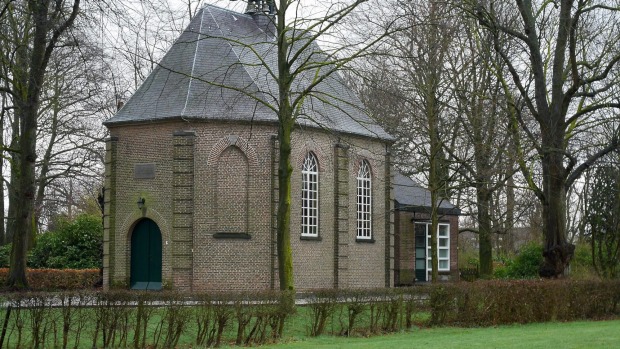
It seemed like a great plan at the time: In the morning I'd explore Nuenen, the Dutch village where Vincent van Gogh lived for two years and where he created his first great painting. And in the afternoon, nothing. I'd loll around Uniworld's newest ship, the SS Maria Theresa, linger over lunch, then grab my book and settle down on a sofa in the Habsburg Lounge until dinner was served.
Before you write me off as slothful, let me say in my defence that the first three days of the SS Maria Theresa's inaugural cruise from Amsterdam to Antwerp had been full-on. My choice entirely. The cruise was my first foray into The Netherlands, beyond Amsterdam, and I wasn't about to miss a thing, opting for tours morning and afternoon, and then staying awake to the wee hours taking in the on-board entertainment.
Anyway, there was only one tour listed for the afternoon in question, and that was to a museum I had never heard about, the Kröller-Müller, in a town called Otterlo, about 45 kilometres from where the ship was berthed on the Waal River at Nijmegen.
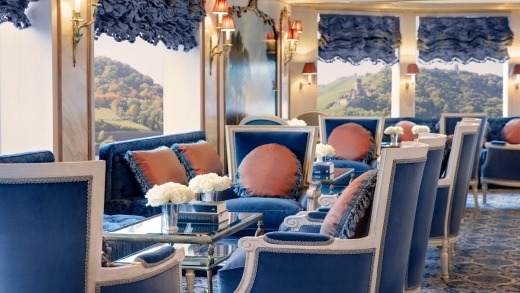
A provincial museum in the middle of nowhere? No thank you, not after Amsterdam where as Uniworld passengers we had been given special access at the van Gogh Museum and also the Rijksmuseum, two of the world's great storehouses of art.
Talk about muddle-headed wombat. Provincial be damned. It might be in the middle of a forest but the Kröller-Müller Museum ranks right up there beside the best in the world, even those two beauties I've mentioned. I'd go as far as to say that while the SS Maria Theresa's Tulips and Windmills cruise delivered innumerable highlights, the visit to the Kröller-Müller Museum visit tops them all.
And I would have missed except for Bart, the ship's cruise director, who convinced me that in this instance ignorance was not bliss but a visit to the Kröller-Müller would be.
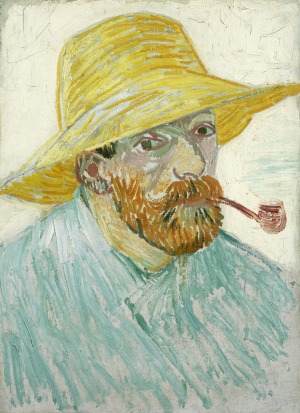
It will probably help river-cruise virgins if at this point I explain what happens on the ships that traverse the rivers of Europe. (It will also go some way to explaining why river cruising is the fastest-growing segment of the fastest-growing sector in travel.) Each evening just before the silver-service dinner, the 150 passengers on the SS Maria Theresa would gather in the Habsburg Lounge and, as the waiters handed out flutes of champagne – or anything else they fancied from the bar – the cruise director, Bart, would give us a run down on the next day's activities, i.e. what tours were on offer, what they were like, who would they would suit. In short, enough detail for us to make our own mind about what would suit us.
I had marked down the visit to the van Gogh Museum in Amsterdam and The Walk in van Gogh's Footsteps tour to Nuenen as must-dos as soon as I had laid eyes on the itinerary. (Like every other student of the 1970s, my share houses were saved from squalor by the glories of Vincent's prints.)
Bart's talk confirmed that it was right for me, especially as 2015 marked the 125th anniversary of van Gogh's death. Van Gogh was 30 when he retreated to his parents' home in Nuenen from 1883 to 1885. And while his time there was fraught with insecurity and illness, it was seminal in his development of his art. He created almost a quarter of his life's output in Neunen, and it was where he painted his first major work, The Potato Eaters, the painting he loved more than any other. The rest of the world might celebrate the lightness and spirit of his art from his time in Arles in the south of France, but the artist forever favoured his early works inspired by the dark and moody landscapes of the province of Brabant, to which Neunen belongs. But, Bart said, while we would learn much about Vincent in Neunen, see where he lived, get a sense of the landscapes he loved, we wouldn't see any of his paintings. If we wanted paintings, then the Kröller-Müller Museum was the place to go. Van Gogh's paintings' second home is the way he described it, with the largest collection of his works outside the eponymous museum in Amsterdam. You will not be disappointed. You will love it, our cruise director promised.
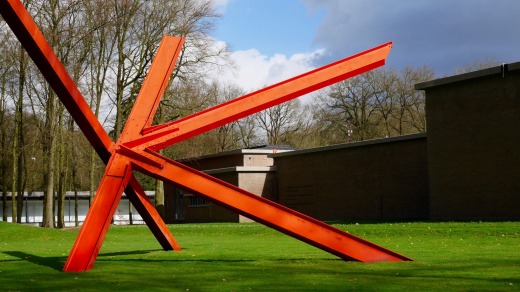
It is not often that I'm comfortable peering over people's fences, but I had no qualms about doing so in Neunen. The pay-off was a glimpse of van Gogh's studio, one of 22 sites directly associated with van Gogh in Nuenen, 14 of which he painted or sketched.
Remarkably, the heart of Nuenen is little changed from the late 19th century. Development has been kept at bay, as has rampant commercialisation that the van Gogh association could have brought.
The VinCentre museum is the tourist centrepiece but it is a well-executed tribute to the artist and his work told through film, audio, stories and exhibits. (The souvenirs are similarly tasteful.)
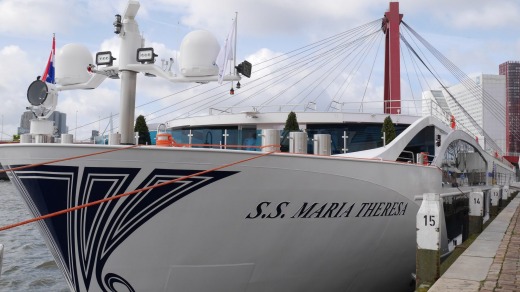
Neunen is also the site of the first monument to van Gogh. The modest plinth made of Brabant's dark stone, embellished with a golden sun, the symbol of Arles, was erected in 1925; which was if you can believe it 40 years after the poor wretch had taken his life.
Yet not everyone was intent on ignoring him. By 1925, Helene Kröller, the first collector to recognise his genius, was well on her way to assembling the second largest collection of van Gogh's works. The immensely wealthy Dutch woman bought her first van Gogh, Portrait of Madame Roulin, in April 1912. When she died in 1938 she had amassed 97 paintings and 185 drawings that now hang in the museum she built with her husband Anton Müller
Kröller's raison d'etre as a collector was to select works that would stand the test of time. Van Gogh, she decided, was a keeper. But she recognised something else in the father of modernism that few of her contemporaries did. "His value lies not in his means of expression, his technique, but rather in his great and novel humanity."

Van Gogh might be the heart of the Kröller-Müller Museum, but there is so much more to it. Kröller collected a staggering 11,500 works of art during her life, including most of the modern art masters. So, for the visitor wanting to pay homage to van Gogh, there is an unexpected and extraordinary value-add in the form of Renoir, Suerat, Mondrian, Modigliani, Picasso and others.
And beyond the strict modern lines of the museum that opened in 1938 lies a sculpture garden, the largest in Europe. Not only is the setting sublime – the museum grounds are part of the 55-square-kilometre Hoge Veluwe National Park – but the sculptures are first rate as well: Auguste Rodin, Henry Moore and Jean Dubuffet.
Bart was right. No one should miss the Kröller-Müller Museum.
Footnote: I did manage that afternoon of indolence and it was perfect. Pretty much like the entire cruise on the SS Maria Theresa. The 10-day Tulips and Windmills cruse I joined was ship's inaugural voyage so it would be understandable if there were a few issues that needed sorting.
But no, nothing. It all appeared to go to plan. The only hiccup that I was aware of occurred during the launching ceremony when it took three swings before the bottle of Dom Perignon was smashed to smithereens. I was told that the staff had practised and it worked every time. And, yes, they practised with the real deal, vintage too. No substitutes or cutting corners on this sleek supership, the 14th in the Uniworld European fleet.
TRIP NOTES
MORE INFORMATION
uniworldcruises.com.au, vangoghmuseum.nl/en/, vangoghbrabant.com/en
CRUISING THERE
The SS Maria Theresa sails the 10-day Tulips & Windmills cruise between Amsterdam and Antwerp from March and April. From $5559 a person, including gratuities, meals, beverages, excursions and internet access. She also sails the 15-day European Jewels itinerary and a selection of Christmas Market voyages.
AMSTERDAM AFFINITY
An exhibition exploring the artistic affinity between Vincent van Gogh and Edvard Munch opens at The van Gogh Museum on September 25 and will run until January 17 next year. Also, 10 of Amsterdam's major cultural institutions have commissioned exhibitions of music, dance, theatre and performance on the same theme.
KROLLER-MULLER MUSEUM
Van Gogh & Co: Criss-crossing the Collection brings together 50 paintings and drawings from the van Gogh collection, together with works by predecessors, contemporaries and followers of the artist. These include Henri Fantin-Latour, Adolphe-Joseph Monticelli, Paul Signac and Paul Gauguin, and the Dutch artists Isaac Israels, Charley Toorop and Bart van der Leck. Concerts, digital painting classes, and a Taste of van Gogh in the museum's restaurant. Activities for children as well.
NUENEN
Various locations in Nuenen are participating in a year-long exhibition of the Brabant and Hague artists with whom van Gogh went out into nature to work, as well as works by contemporary artists inspired by van Gogh.
VINCENT'S ART ROOM
Go back to Vincent's school and learn how to paint. The 13-year-old van Gogh was schooled in the National High School in Tilburg, also in Brabant. Vincent's Art Room can be visited individually or in groups. There is a masterclass for children on Sundays under the supervision of an artist
BIKING BY THE STARS
And, of course, this being The Netherlands with 18 million bikes, a number of Vincent-inspired bike paths have been created. The pick of them is in Eindhoven, a town in the province of Brabant where van Gogh was born and lived for most of his 37 years. Inspired by The Starry Night, the path lights up at dusk replicating the pattern in the skies depicted in what is generally held to be one of van Gogh's greatest works.